![]()
THE TRUTH ABOUT KUNDALINI
THE TRUTH ABOUT KUNDALINI
Dr. Udo Szekulics
Mala Rao-Szekulics
"And whosoever will, let him take the water of life freely.”
Revelation of John 22, 17
The traditions of India and its neighbouring countries offer more
spiritual knowledge than any other region of the world. At home and
at school we hardly learn anything about the historical and
spiritual background of these areas. As a result, we incur the
danger of giving a wrong interpretation to this region's
spiritual tradition by extracting a part of the whole, if we are
interested in Eastern wisdom.
On the subcontinent of India we see a variety of spiritual
traditions. Hinduism, Buddhism, Lamaism and other teachings confuse
the Western seeker with thousands of gods, deities and different
perceptions about life after dead and destiny. But even in the large
variety of tinges and facets of Hinduism and its pantheon of deities
there is the idea of a final unity. This one is the Brahma, or
Sadashiva. Through his power Mahamaya (the Great Illusion) he
creates all divine, human and material aspects of the universe. At
the end, he reabsorbs everything. Yoga, the real meaning of which
is"Union with God", embraces all the efforts of mankind in
the spiritual domain. The final aim is not some blurred
"enlightenment", also not to jump in the air a little bit or
wear clothes of a certain colour, the aim is the connection with an
higher awareness. Yoga," connection", is only good when this
perception of a higher awareness can be achieved. This Yoga is not
one single technique or a determined exercise, it is a way of life
once the connection was established. All the asanas, breathing
techniques et cetera are helpful tools for those who are connected
and know how to apply these techniques, because the same asana may
be helpful to one, but harmful to the other — depending on
individual constitution. Doing physical exercise without being
connected may calm you down a little bit, however, basically it is
as if you try to swim without water.
As we have received so much from the East and still are to receive
much more, we would like to look closer at the basis of Indian
Knowledge. This basis is the classical scriptures of old, for
example the Vedas or Upanishads, as well as the teachings of
venerated Indian saints and masters such as Markendeya or Tukaram.
Simultaneously, we shall try to integrate important scriptures of
other cultures - also of the west.
Looking at most of the modern publications1 on Kundalini, it seems
obvious that nothing is known of the roots of religious knowledge.
According to the quoted ancient sources, Kundalini is the most
subtle, the holiest and mightiest force of the universe, which, only
under certain circumstances, is accessible to mortals. These
superlatives are meant literally. Even the"Rishis", the
saints/sages, who communicated with the Gods themselves were not
allowed to awaken the Kundalini in human beings. Bearing this in
mind, one should consider carefully advertisements for"Kundalini-
Seminars"or similar offers. Kundalini is not a discovery of our
times, she has been described thousands of years before Jesus
Christ; and the knowledge we have got has come through old Indian
scriptures.
Let us try to understand this tremendous power as far as we can with
our minds. Numerous names of her are at the same time names of the
Goddess Parvati as a virgin ("Uma"," Gauri"). The
name Parvati has only been given at her marriage with Shiva. In her
aspect as a mother the spouse of Shiva becomes the"Devi",
The Mother Goddess of the created universe. As Devi she incarnates
in times of great difficulty, when all the negative forces rise up
and challenge the righteous and religious. She destroys all the
demons ruthlessly and without pity, because, as mother, she protects
her children - the seekers of truth. This power has also been
attributed to the Kundalini, when she acts in a cleansing way in
human beings and removes the"Individual demons"within. And
there exists a link between the primordial power Adi Shakti2 and
Kundalini.
In the few sources3 that refer to Shri Adi Shakti, it is usually
said that she is the primordial and highest power. She is the one
who created the first manifestation; the bridge between the formless
non-manifested God and the whole formed creation. Kundalini also
builds a connection with the divine, connecting the individual to a
collective, higher awareness. — Shri Adi Shakti is described as so
powerful that Shiva, Vishnu and Brahmadeva were extremely impressed,
when they were once granted the permission to visit her sphere (Devi
Bhagawatam, III book, cp. FN 3). Only after some time did they
realize that they were in their mother's house. Apart from the
tremendous power that lies in the Kundalini as part of the
primordial force, the protective, motherly aspect clearly appears.
Before considering any detailed parts of ancient scriptures - in
particular the"Jnaneshwari"- we shall discuss the function
of the Kundalini. At this point we must introduce the greatest
authority in this matter; Shri Mataji Nirmala Devi, the Avatara of
our times, proven by the awakening of the Kundalini in hundreds of
thousands of people all over the world. She can indeed transmit a
practical experience of the Kundalini-Power, as well as the
corresponding knowledge. Thousands and thousands of people in India,
thousands throughout the west, and also in Russia, who have been so
fortunate to meet Her, can confirm this. All other Saints, who might
have power over Kundalini, lead a withdrawn and hidden life in the
Himalayas and its foothills, and they cannot give Kundalini-awakening
en masse.
Shri Mataji Nirmala Devi explains that the Kundalini resides in
every living being as the divine desire to become one with God.
Since the beginning of the creation this force has been acting and
pushing the evolution forward. In our western tradition Kundalini
could be understood as the Holy Spirit. In Hebraic scriptures she is
called"Ruach.”
If a human being is perfectly pure in his inner, subtle system
(which practically means that he has become a saint) he receives his
total liberation," Moksha", at the moment of the Kundalini
awakening. This perfect liberation took place for Buddha after he
had renounced all his attachments and temptations. If Kundalini
awakening takes place in"non-perfect"human beings, she
starts cleansing different energy centers, the"Chakras.” The
effect of the desire to become one with the cause of all creation
manifests in the healing of the chakras and is a first step on our
way to the final goal. The significance of the Kundalini being the
reflection of the divine primordial desire is, that it corresponds
with the classical representation of Adi Shakti, who at the very
moment of creation has given shape first to the desire (Iccha-
Shakti) and then to the act (Saraswati).
The last, complete liberation is the union of the soul, the Atma
(Shri Shiva) with the Kundalini (Shakti) in order to make the Atma
aware or conscious in us. That means, the truth, the all-pervading
awareness and the pure joy become reality in us. The Sahasrara
chakra above the fontanel bone at the top of the skull opens up and
replaces the biggest part of our ego and our conditionings. This
process has often been described poetically in old scriptures:
"I had been impressed and dragged far away,
with a burden on my head; now I have
escaped from the burden, for you have accepted me.
How many times I cried to you in time past!
Tuka says, Today my service has borne fruit.”
Tukaram," The Poems of Tukaram", Chap. XII,593, Delhi, 1983.
"Thou art diverting Thyself, in secrecy with
Thy Lord, in the thousand-petalled lotus,
having pierced through the Earth situated in
the Muladhara, the Water in the Manipura, the
Fire abiding in the Swadhisthana, the Air in
the Heart (Anahata), the Ether above (the
Vishuddhi), and Manas between the eyebrows
(Ajna) and thus broken through the entire
Kula path (central channel - Sushumna).”
Shankaracharya," Saundarya-Lahari"
(The Ocean of Beauty), 9 thpoem, Adya, 1977.
Where have these modern descriptions of so-called Kundalini-
experience come from, which are contradictory and which often report
very unpleasant experiences? Most probably these descriptions are
partly due to wrong translations of the Jnaneshwari and partly to
misunderstandings. Misunderstandings in the sense of mental concepts
instead of a practical experience.
For a long time the teachings about Kundalini have been kept as a
secret knowledge that has only been bestowed simultaneously with
self-realisation, the awakening of the Kundalini. This was the
real heritage of the masters, the saints or gurus, who did not
perform a hollow, symbolic act, but a living process.
In the Bagavadgita the subject of Kundalini has been very briefly
referred to. The Upanishads have only treated parts of it.
Markandeya was the first one to break with the taboo (thousands of
years ago), and talked openly about it. What these classical
scriptures have in common is that they are difficult to understand
and that the effects of Kundalini have not been described in detail.
This changed in the 13th century A.D. Around 1275 in the central
part of India, Maharashtra, Jnanadeva (also called Jnaneshwar or
Dyaneshwar) was born. Although he left this world at a very
young age, he is one of Indias greatest saints. As the Bagavadgita
had been written in Sanskrit the masses did not have direct access
to this most popular religious scripture of the Hindus. Thus
Jnanadeva was convinced by his brother to write a commentary on the
Bagavadgita in Marathi (the common language of the people in
Maharashtra). This work, the"Jnaneshwari", contains many more
details than the Bagavadgita. It is said that the
"Jnaneshwari"can be read like a comment of God himself, who
acts in the Bagavadgita. - Marathi has been and is still spoken in
Maharashtra. Apart from the changes of a living language through 700
years, Marathi is ideal for beautiful poetry and religious works,
but also can be misunderstood if taken literally, as every single
word has various meanings, often a material as well as a subtle or a
poetic one. The use of images is an important method of poetic
expression. This country of Maharastra and its language have a
special significance in the spiritual development of India. Shri
Sita and Shri Rama (Ramayana: the incarnation of the God Vishnu and
his spouse Laxmi) trod on this soil, Ekanath, Tukaram and many other
important rishis and saints have left behind their works in the
Marathi language.
In the 6th chapter of the Jnaneshwari the Kundalini and its effects
are described. This text again is not easy to understand. The
learned and scholars have tried to avoid this very difficult chapter
for 700 years, as all written knowledge of the world cannot replace
the holy experience. Thus the academics never understood it; and
there is one essential point for us: The translations, mainly in
English, available in the West, are not correct. They certainly all
relate to one original translation, as the mistakes are apparently
similar. These errors of translation are probably responsible for the
incomprehensible descriptions of Kundalini that we have in the west.
For example one of the main mistakes is to suppose that the seat of
the Kundalini is in the region of the stomach. This mistake is to
be found in the book of Avalon (see FN 1). In the original
scriptures nothing of the kind is mentioned. Shankaracharya (8th
century AD) says in the Saundarya Lahari (see above) in the 10
th verse: .”.Thyself assuming the form of a serpent of
three-and-a-half coil, sleepest Thou in the hollow of the
Kulakunda4.” The description refers to the triangular bone, to
which we will come back later. Finally, the Devi Bhagawatam should
be quoted, book XII, chapter 5, where The Mother of the Worlds (Shri
Adi Shakti) is again described as the"Kundalini in the
Mooladhar.”
Besides these wrong translations, there is a lack of understanding
which we mentioned before: In the Jnaneshwari, at the end of the 10
th sub-chapter of chapter 6, Shri Krishna explains clearly the
way of a real yogi and says explicitly, that it is the EXPERIENCE of
self-realisation, and there is no doubt about the fact that this
experience has to come from God5. As Arjuna is urging for this
knowledge, Krishna says: (11th sub-chapter, first sentence): "I
explain it to you in more detail now, but only through the
experience it will bear fruit.” So it is clear that a purely
mental understanding of the description of the Kundalini is
meaningless if the actual happening of self-realisation is lacking.
The mediocre translations of the Jnaneshwari unfortunately confirm
these words.
This introduction is followed by the description of the
"Asana" (sitting position), which is favourable to the
awakening of the Kundalini. The awakening itself can only be
performed by a person who is authorized. The asana is described
several times as"The steady seat", which corresponds to the
lowest chakra (Mooladhara chakra). It lies at the root of our body
and guards the sleeping Kundalini in the sacrum (Mooladhar). Any
weakness of this chakra, which is the throne of innocence and
wisdom, causes permanent difficulties, as it is the support of the
Kundalini. Certain sitting positions should just enable our
attention to detach from physical processes. Later in the 13 th sub-
chapter it is mentioned that the palms of the hands should be kept
upwards, in order to feel the Kundalini-energy.
There is a considerable difference between the Mooladhara-chakra and
the Mooladhar which lies above it (sacrum), the triangular bone at
the end of the spine. At the awakening of the Kundalini, her
pulsations can often be seen with the naked eye at the sacrum. This
perception is the best proof of its real position; all other
conclusions do not correspond with the reality. Lying at the basis
of the spine, she rises through the middle channel (Sushumna), which
corresponds with the canalis centralis in the grey matter of the
backbone. The medical term is"Os Sacrum," holy bone",
taken over directly from the Greek by the Romans: Its special
position was known also in the West, in ancient times. We know that
the Egyptians attributed this"Os Sacrum"to the God Osiris.
In an article of the"Journal of the American Medical
Association" (JAMA"of 1987 it is written: .”.. the idea
that the sacrum is the last bone in the body to disintegrate after
death and, therefore, necessary for resurrection could qualify it as
sacred. The first Biblical intimation that a single bone might be
the bone needed for resurrection is in Psalms 34, 21: He watches
over all the bones; one of them shall not be broken...”6 - The
idea of resurrection or second birth mentioned here is, in various
forms, present in all religions.
To all those, who really can feel the effects of the awakened
Kundalini, the 14th sub-chapter of Jnanadevas work proves to be an
absolute disaster in translation - knowledge without experience
is useless. We have chosen a few important aspects to illustrate
this.
The translation of the Marathi word"Tap"As"heat"
caused by the awakening of Kundalini is wrong in this context.
Here"Tap"means"force.” The force, resulting from
the exercise of asanas and giving the possibility of the awakening,
but not the awakening itself. The activating of the Kundalini is a
process beyond human willpower and beyond the force of human action.
Thus in the translations, by a misunderstanding of nuances, the
mother Kundalini becomes a monster, that devours the intestines
voraciously - Whereas in a subtle, beautiful language the power is
praised who is eager to give the second birth, to permeate the whole
body and to renew it.7
The body and its organs, each cell is being touched and purified by
Kundalini. This process has been described in detail right up to the
roots of the hair by Jnanadeva. Certainly there is no one, who ever
before was able to observe and understand the Kundalini in his body
and subtle system as precisely as this great Saint. The effect of
the different breathing forces in connection with Kundalini is
explained as well as the effects on the elements.
The Janeshwari continues with the procedure after the purification
of the subtle centres: The Kundalini stays in the centre-channel
(Sushumna) of three subtle channels and pours out"of her mouth
water, that becomes nectar.” This nectar in its turn brings forth
a"vital wind, .... that gives a cooling sensation in and on
the body.”
The Janeshwari continues with the procedure after the purification of the subtle centres: The
Kundalini stays in the centre-channel (Sushumna) of three subtle channels and pours out "of her
mouth water, that becomes nectar.” This nectar in its turn brings forth a"vital wind, .... that gives a
cooling sensation in and on the body.”8 The perception of the Cool Breeze is the best on the palms of the
hands and at the top of our head (Sahasrara Chakra). This coolness
is also described in the Koran - Sura 36, 65: "One day we will
seal their mouths, but their hands will speak...”. This Sura,
called"The Heart of the Koran"has the title"JS.”
These are the initials of"Joga Sahadsch"As it would be
spelled in Arabic.”Sahaj"means"born with"or
"spontaneous", Sahaja Yoga is the yoga of the spontaneous
unity with God. The hands"speak"In such a way that each
finger, root of the hand and palm correspond with a chakra and the
various sensations of the part of the hand inform about the
condition of the chakras. There are further hints to the perception
of Kundalini in the Koran, as in Sura 24, 24 or 41, 21 and
following.”
This cooling energy does not only exist after the awakening of the
Kundalini, it is one with the divine force, who awakens Kundalini in
the individual human being and permeates the whole cosmos. In the
Gospel of John, 4, Jesus describes the process of awakening to a
Samaritan woman next to a well: "If you knew the gift of God, and
who it is that asks you for a drink, you would have asked him,
and he would have given you water of life. The woman said to him,
Sir, you have nothing to draw with, and the well is deep: Where can
you get that water of life? ... Jesus answered, Everyone who drinks
this water will be thirsty again: but whoever drinks the water that
I give him will never thirst. Indeed, the water I give him will
become in him a spring of water welling up into eternal life.”As
Janeshwar uses the image of the"Water"or"Wind of
life", we can find the Kundalini and its effects described by
Jesus Christ in the same way. - The completion of the Kundalini's
task is depicted by Jnanadeva in most beautiful Marathi poetry. The
skin is only an envelope, in which the radiant being of the 17th
phase of the moon is covered. The full moon, the 16th phase, has the
meaning of fulfillment, completion. Only Sadashiva, God beyond all
perception, is beyond that, in the illuminated Sahasrara.
Through the ancient Scriptures9 a structure of the inner system
takes shape, which is still very common in India. At the bottom we
find the four-petalled lotus of the Mooladhara Chakra. In it
resides the guardian of Kundalini, who represents wisdom and
innocence. The Kundalini is situated above this center in the sacrum
bone and therefore, at her awakening, cannot pass through the chakra
placed underneath. If one tries to raise the Kundalini without
authorization, then the guardian of the Kundalini sends waves of
heat through the body in his temper. Sometimes these waves of heat
are misunderstood as the awakening of the Kundalini, but it is just
the opposite10. Jnanadeva says very clearly, that coolness is the
sign of the rising Kundalini. Each unauthorized practice to get in
touch with Kundalini leads to a damage that makes an awakening more
difficult. Only if the process is triggered by an authorized person,
does it lead to its fulfillment. The Kundalini, an intelligent and
motherly energy, can never do any harm. Even when she heals physical
diseases, it is always in a gentle manner.
In relation to the above mentioned Mooladhara Chakra we must stress
that there is no connection at all between sexual activities and the
Kundalini or her awakening. Unnatural and exaggerated attention on
sexuality weakens and damages this lower chakra. Then the Kundalini
has a weak basis and cannot rise for long. In the same way other
unnatural behaviour may disturb other Chakras or energy-centers, the
same is true for bad intentions or desires even. Thus greed or hatred
for example block the ascend of the Kundalini at different levels.
As described in the poetry of Shankaracharya and as known in India
in general, the ascending Kundalini passes through the Nabhi-,
Swadisthana-, Anahata-, Visshuddhi-, and Agnya-Chakra. As soon as
the Agnya Chakra at the forehead gets pierced through,
"Nirvichara Samadhi", thoughtlessness, is achieved. Only at
that very moment one can talk about an experience which allows a
deeper understanding of the"Jnaneshwari"for instance.
Nirvichara Samadhi is spontaneous, like every movement of the
Kundalini. Samadhi cannot be achieved through human willpower, that
is why the concept, that through efforts of concentration real
spiritual progress could be achieved, is wrong.
After the Sushumna, which is the central channel, the subtle
channels on the left and the right are enlightened. The left (Ida-
Nadi) represents the emotions, conditionings and the past, the right
(Pingala-Nadi) activity, planning and the future.
The whole process physically relates with the parasympathetic system
and therefore cannot be controlled consciously. The real awakening
of Kundalini does not cause any spectacular process or sensation out
of control.”Only"A kind of profound peace and joy can be
felt, and coolness on top of the head and on the palms of the hands.
If the subtle centres, the chakras, are damaged, the perception of
Kundalini is reduced in accordance.
Only the one who is able to awaken the Kundalini, so that the
effects, as described by Jnanadeva and other masters, can be felt,
so that the water of life is flowing, can be called a real Guru
in the best tradition of the Great Indian Teachers.
THE TRUTH ABOUT KUNDALINI
Dr. Udo Szekulics
Mala Rao-Szekulics
1 E.g. Gopi Krishna, Kundalini, Lustig-Verlag, 1983; Arthur Avalon,
Die Schlangenkraft (The Serpent-Power), Bern 1982; Shivananda,
Kundalini Yoga, Munich-Planegg, 1953; just to mention the first
ones, hundreds followed, without any basis in the ancient
scriptures, and without genuine experience.
2 The above-mentioned"Mahamaya"," The Great Illusion", is just one
aspect of the Adi Shakti
3 E.g. Devi Bhagawatam, as"The Srimad Devi Bhagawatam", Munshiram Manoharlal, Delhi, 1977, cp. Especially book III, ch.3, 4 and 5.
4 The three-and-half coils of Kundalini relate to the three
"moods" (basic principles) of the creation and - the half
coil - to the primordial power, neither manifest nor non-manifest.
These moods are Mahakali, Mahasaraswati and Mahalaxmi: Desire, also
destruction of evil; action, creation; and finally the power of the
central channel, of evolution. As said before, Kundalini is a
motherly energy and it is not incidentially, that the deepest mights
of the universe are female in all the world's cultures ("The
Mothers"In Goethe's"Faust"). We meet those basic
principles in antique Rome as"Parcae" (The Fates), in
classical Greece as"Moires": Clotho, Lachesis and Atropos.
At the
foot of the Germanic world-ashtree Yggdrasil the"Nornes"
Urd,
Werdandi and Skuld are resting - spinning, measuring and cutting the
"thread of life.”
5 Cp. Vedas, Samaveda, book III, ch. 2, decade V, 10," ...God, the
Bestower of Dharma, Arth, Kama and Moksha.”Moksha means complete
liberation, enlightenment.
6 JAMA, 1987, Vol. 257, 2061 a. fw. P., Oscar Sugar, PhD, MD.
University of Illinois College of Medicine, Chicago.
7 See the Gospel of John, 3.3 f. Jesus talks to Nikodemus about this
second birth and Nikodemus asks, if he would have to return into his
mother's womb. Jesus tells him that he must be born again of the
spirit," of water and of the Spirit.” - The importance of
being"born again"Is also stressed by the genuine saints of
todays India, e.g. Ramana Maharshi.
8 Also in the western literature references to this unique perception
can be found: "Mild creative breeze,
A vital breeze which travelled gently on
O'er things which it had made"
Wordsworth, Prelude I, 43-45
"Still the Breath Divine does move,
And the Breath Divine is love.”
W. Blake, The Everlasting Gospel, 41-42
9 Essentially the quoted: Bagavadgita, Upanishads, Devi Bhagawatam,
Scriptures of: Shankaracharya, Markandeya, Tukaram and of course
Jnanadeva.
10
Inner tensions, unusual forms of perception and specially waves of
heat through the body are mentioned by Gopi Krishna (cp. FN1)
falsely as effects of Kundalini; however these sensations are
warnings, not to misuse this holy power.
THE APOCALYPSE OF THE SPIRIT-PARACLETE
The fulfillment of the promised divine eschatological instruction

“The Paraclete will come (15:26; 16:7, 8, 13) as Jesus has come into the world (5:43; 16:28; 18:37)... The Paraclete will take the things of Christ (the things that are mine, ek tou emou) and declare them (16:14-15). Bishop Fison describes the humility of the Spirit, 'The true Holy Spirit of God does not advertise Herself: She effaces Herself and advertises Jesus.' ...
It is by the outgoing activity of the Spirit that the divine life communicates itself in and to the creation. The Spirit is God-in-relations. The Paraclete is the divine self-expression which will be and abide with you, and be in you (14:16-17). The Spirit's work is described in terms of utterance: teach you, didasko (14:26), remind you, hypomimnesko (14:26), testify, martyro (15:26), prove wrong, elencho (16:8), guide into truth, hodego (16:13), speak, laleo (16:13, twice), declare, anangello (16:13, 14, 15). The johannine terms describe verbal actions which intend a response in others who will receive (lambano), see (theoreo), or know (ginosko) the Spirit. Such speech-terms link the Spirit with the divine Word. The Spirit's initiatives imply God's personal engagement with humanity. The Spirit comes to be with others; the teaching Spirit implies a community of learners; forgetful persons need a prompter to remind them; one testifies expecting heed to be paid; one speaks and declares in order to be heard. The articulate Spirit is the correlative of the listening, Spirit-informed community.
The final Paraclete passage closes with a threefold repetition of the verb she will declare (anangello), 16:13-15. The Spirit will declare the things that are to come (v.13), and she will declare what is Christ's (vv. 14, 15). The things of Christ are a message that must be heralded...
The intention of the Spirit of truth is the restoration of an alienated, deceived humanity... The teaching role of the Paraclete tends to be remembered as a major emphasis of the Farewell Discourses, yet only 14:26 says She will teach you all things. (Teaching is, however, implied when 16:13-15 says that the Spirit will guide you into all truth, and will speak and declare.) Franz Mussner remarks that the word used in 14:26, didaskein, "means literally 'teach, instruct,' but in John it nearly always means to reveal.” (Stevick 2011, 292-7)
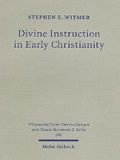
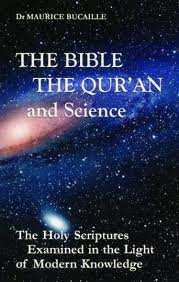
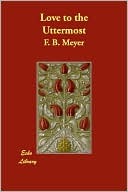
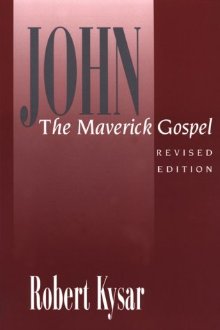
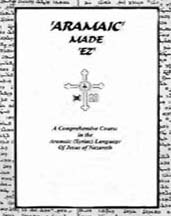
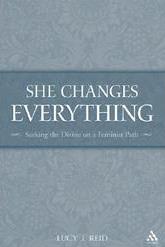
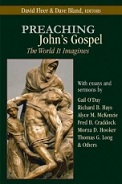

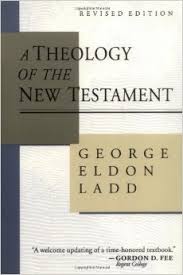
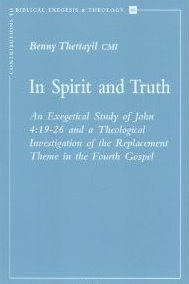


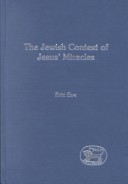
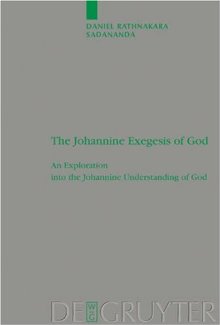
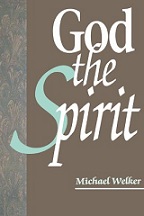
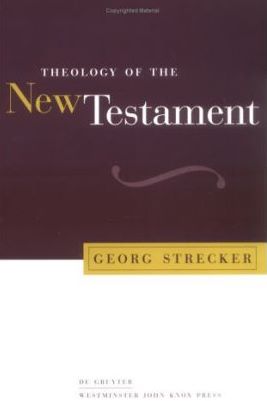
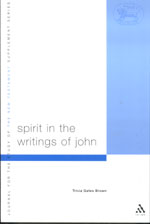
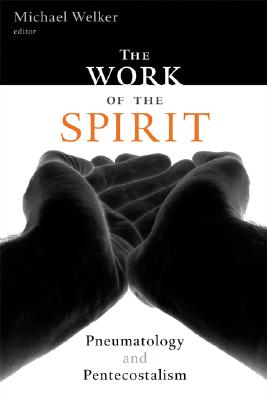
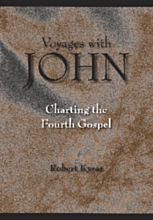


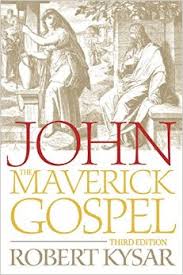
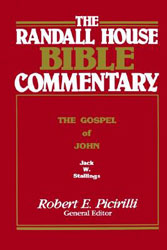

Stephen E. Witmer, Divine instruction in Early Christianity
“Jesus therefore predicts that God will later send a human being to Earth to take up the role defined by John .i.e. to be a prophet who hears God's words and repeats his message to man.”
M. Bucaille, The Bible, the Qur'n, and Science
“And when Jesus foreannounced another Comforter, He must have intended a Person as distinct and helpful as He had been.”
F. B. Meyer, Love to the Utmost
“The Paraclete has a twofold function: to communicate Christ to believers and, to put the world on trial.”
Robert Kysar, John The Meverick Gospel
“But She—the Spirit, the Paraclete...—will teach you everything.”
Danny Mahar, Aramaic Made EZ)
“Grammatical nonsense but evidence of the theological desire to defeminize the Divine.”
Lucy Reid, She Changes Everything
“The functions of the Paraclete spelled out in verses 13-15... are all acts of open and bold speaking in the highest degree.”
David Fleer, Preaching John's Gospel
“The reaction of the world to the Paraclete will be much the same as the world's reaction was to Jesus.”
Berard L. Marthaler, The Creed: The Apostolic Faith in Contemporary Theology
Bultmann calls the “coming of the Redeemer an 'eschatological event,' 'the turning-point of the ages.”
G. Ladd, A Theology of the New Testament
“The Paraclete equated with the Holy Spirit, is the only mediator of the word of the exalted Christ.”
Benny Thettayil, In Spirit and Truth
“The divine Paraclete, and no lessor agency, must show the world how wrong it was about him who was in the right.”
Daniel B. Stevick , Jesus and His Own: A Commentary on John 13-17
Stephen Smalley asserts that “The Spirit-Paraclete ... in John's Gospel is understood as personal, indeed, as a person.”
Marianne Thompson, The God of the Gospel of John
“The Messiah will come and the great age of salvation will dawn (for the pious).”
Eric Eve, The Jewish context of Jesus' Miracles
“The remembrance is to relive and re-enact the Christ event, to bring about new eschatological decision in time and space.”
Daniel Rathnakara Sadananda, The Johannine Exegesis of God
“The Spirit acts in such an international situation as the revealer of 'judgment' on the powers that rule the world.”
Michael Welker, God the Spirit
The Paraclete's “Appearance means that sin, righteousness, and judgment will be revealed.”
Georg Strecker, Theology of the New Testament
“While the Spirit-Paraclete is the true broker, the brokers they rely on are impostors.”
T. G. Brown, Spirit in the writings of John
“The pneumatological activity ... of the Paraclete ... may most helpfully be considered in terms of the salvific working of the hidden Spirit.”
Michael Welker, The work of the Spirit
“The pneuma is the peculiar power by which the word becomes the words of eternal life.”
Robert Kysar, Voyages with John
“The gift of peace, therefore, is intimately associated with the gift of the Spirit-Paraclete.”
Francis J. Moloney, The Gospel of John
“This utopian hope, even when modestly expressed, links Jesus and the prophets to a much wider history of human longing.”
Harvey Cox, The Future of Faith
“Because of the presence of the Paraclete in the life of the believer, the blessings of the end-times—the eschaton—are already present.”
Robert Kysar, John
“They are going, by the Holy Spirit's power, to be part of the greatest miracle of all, bringing men to salvation.”
R. Picirilli, The Randall House Bible Commentary
“The Kingdom of God stands as a comprehensive term for all that the messianic salvation included... is something to be sought here and now (Mt. 6:33) and to be received as children receive a gift (Mk. 10:15 = Lk. 18:16-17).”
G. Ladd, A Theology of the New Testament
“But today is the day I declare that I am the one who has to save the humanity. I declare I am the one who is Adishakti, who is the Mother of all the Mothers, who is the Primordial Mother, the Shakti, the desire of God, who has incarnated on this Earth to give its meaning to itself; to this creation, to human beings and I am sure through My Love and patience and My powers I am going to achieve it.
I was the one who was born again and again. But now in my complete form and complete powers I have come on this Earth not only for salvation of human beings, not only for their emancipation, but for granting them the Kingdom of Heaven, the joy, the bliss that your Father wants to bestow upon you.”
THE MOTHER: Messiah-Paraclete-Ruh
London, UK—December 2, 1979
“I am the one about which Christ has talked... I am the Holy Spirit who has incarnated on this Earth for your realization.”
THE MOTHER: Messiah-Paraclete-Ruh
New York, USA—September 30, 1981
“Tell all the nations and tell all the people all over the Great Message that the Time of Resurrection is here. Now, at this time, and that you are capable of doing it.”
THE MOTHER: Messiah-Paraclete-Ruh
Cowley Manor Seminar, UK—July 31, 1982
Guest: “Hello Mother.”
Shri Mataji: “Yes.”
Guest: “I wanted to know, is the Cool Breeze (Pneuma) that you have spoken about, you feel on the hands the Cool Wind of the Holy Spirit, as spoken about in the Bible?”
Shri Mataji: “Yes. Yes, yes, same thing, same thing. You have done the good job now, I must say.”
Interviewer: “Is it the Holy Spirit?”
Shri Mataji: “Yes, of course, is the Holy Spirit.”
Guest: “Aha... I am feeling it now on my hand through the [not clear]”
Shri Mataji: “It’s good.”
Interviewer: “Did you want to say anything more than that?”
Guest: “No, I just... That’s all I wanted to know because I...”
Shri Mataji: “Because you are thoughtless now. Enjoy yourself.”
Guest: “Thank you.”
THE MOTHER: Messiah-Paraclete-Ruh-Devi
Talkback Radio 2UE, Sydney, Australia—March 31, 1981
Second Guest: “I just want to ask Mother about a quotation from the Bible.”
Interviewer: “Yes, what’s that?”
Guest: “It says, ‘But the comfort of the Holy Spirit that the Father will send in My name would teach you all things.’ I would like to ask Her about that.”
Interviewer: “Could you just repeat the quotation again?”
Guest: “But the Comforter, the Holy Spirit, whom the Father will send in My name, will teach you all things.”
Interviewer: “And that’s from where?”
Guest: “John chapter 14, verse 26.”
Shri Mataji: “I think you should take your realization and then you will know the answer to it. Because, logically if it points out to one person, then you have to reach the conclusion, isn’t it? That’s a logical way of looking at things. But I am not going to say anything or claim anything. It is better you people find out yourself.”
Interviewer: “Does that answer your question?”
Guest: “Is the, is the Comforter on the Earth at the present time? Has the Comforter incarnated? Mataji should be able to tell us this because She said that through these vibrations on Her hands, She ...”
Shri Mataji: “Yes, She is very much here and She’s talking to you now. Can you believe that?”
Guest: “Well, I feel something cool [Pneuma/Prana/Chi] on my hand. Is that some indication of the ...?”
Shri Mataji: “Yes, very much so. So that’s the proof of the thing. You’ve already started feeling it in your hands.”
Guest: “Can I?”
Shri Mataji: “Ask the question, ‘Mother, are you the Comforter?’”
Guest: “Mother, are you the Comforter?”
Shri Mataji: “Ask it thrice.”
Guest: “Mother, are you the Comforter?”
Shri Mataji: “Again.”
Guest: “Mother, are you the Comforter?”
Shri Mataji: “Now, what do you get?”
Guest: “Oh, I feel this kind of cool tingling [Pneuma/Prana/Chi] passing all through my body.”
Shri Mataji: “That’s the answer now.”
THE MOTHER: Messiah-Paraclete-Ruh-Devi
Talkback Radio 2UE, Sydney, Australia—March 31, 1981
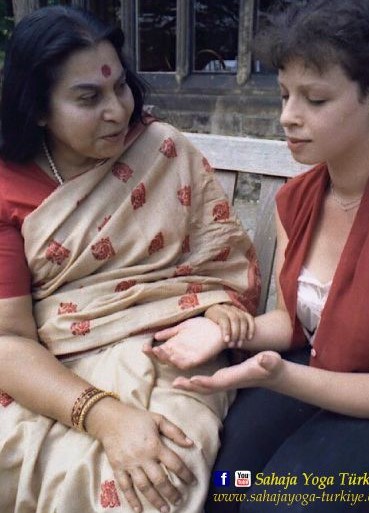
“The Paraclete and the disciples (vv. 25-26): The theme of departure (cf. vv. 1-6; vv. 18-24) returns. There are two "times" in the experience of the disciples: the now as Jesus speaks to them (v. 25) and the future time when the Paraclete, the Holy Spirit, sent by the Father in the name of Jesus, will be with them (v. 26). The Paraclete will replace Jesus' physical presence, teaching them all things and recalling for them everything he has said (v. 26). As Jesus is the Sent One of the Father (cf. 4:34; 5:23; 24, 30, 37; 6:38-40; 7:16; 8:16, 18, 26; 12:44-49), so is the Paraclete sent by the Father. The mission and purpose of the former Paraclete, Jesus (cf. 14:13-14), who speaks and teaches "his own" will continue into the mission and purpose of the "other Paraclete" (cf. v. 16) who teaches and brings back the memory of all that Jesus has said. The time of Jesus is intimately linked with the time after Jesus, and the accepted meaning of a departure has been undermined. The inability of the disciples to understand the words and deeds of Jesus will be overcome as they "remember" what he had said (cf. 2:22) and what had been written of him and done to him (cf. 12:16). The "remembering" will be the fruit of the presence of the Paraclete with the disciples in the in-between-time. In v. 16 Jesus focused on the inability of the world to know the Paraclete, but in v. 26 the gift of the Paraclete to "his own" is developed. As Jesus was with the disciples (v. 25), so will the Paraclete be with the disciples in the midst of hostility and rejection (v. 16). As the story has insisted that Jesus' teaching has revealed God to his disciples, so will the Paraclete recall and continue Jesus' revelation of God to the disciples (v. 26).” (Harrington 1998, 412)
“This is the transformation that has worked, of which Christ has talked, Mohammed Sahib has talked, everybody has talked about this particular time when people will get transformed.”
THE MOTHER: Messiah-Paraclete-Ruh
Chistmas Puja, Ganapatipule, India—25 December 1997
“The Resurrection of Christ has to now be collective Resurrection. This is what is Mahayoga. Has to be the collective Resurrection.”
THE MOTHER: Messiah-Paraclete-Ruh
Easter Puja, London, UK—11 April 1982
“Today, Sahaja Yaga has reached the state of Mahayoga, which is en-masse evolution manifested through it. It is this day’s Yuga Dharma. It is the way the Last Judgment is taking place. Announce it to all the seekers of truth, to all the nations of the world, so that nobody misses the blessings of the divine to achieve their meaning, their absolute, their Spirit.”
THE MOTHER: Messiah-Paraclete-Ruh
MAHA AVATAR, ISSUE 1, JUL-SEP 1980
“The main thing that one has to understand is that the time has come for you to get all that is promised in the scriptures, not only in the Bible but all all the scriptures of the world. The time has come today that you have to become a Christian, a Brahmin, a Pir, through your Kundalini awakening only. There is no other way. And that your Last Judgment is also now.”
THE MOTHER: Messiah-Paraclete-Ruh “You see, the Holy Ghost is the Mother. When they say about the Holy Ghost, She is the Mother... Now, the principle of Mother is in every, every scripture — has to be there. Now, the Mother's character is that She is the one who is the Womb, She is the one who is the Mother Earth, and She is the one who nourishes you. She nourishes us. You know that. And this Feminine thing in every human being resides as this Kundalini.”
THE MOTHER: Messiah-Paraclete-Ruh-Devi
Radio Interview Oct 01 1983—Santa Cruz, USA
“But there is a Primordial Mother which was accepted by all the religions; even the Jews had it... In India, this is called as Adi Shakti. In every religion they had this Mother who was the Primordial Mother.”
THE MOTHER: Messiah-Paraclete-Ruh-Devi
TV Interview, Los Angeles, USA—11 October 1993
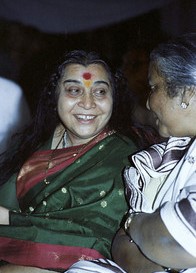
Total number of Recorded Talks 3058, Public Programs 1178, Pujas 651 and Other (private conversations) 1249
“What are they awaiting but for the Hour to come upon them suddenly? Its Signs have already come. What good will their Reminder be to them when it does arrive?” (Qur'n, 47:18) “As the above verse indicates, God has revealed some of Doomsday's signs in the Qur'n. In Surat az-Zukhruf 43:61, God informs us that 'He [Jesus] is a Sign of the Hour. Have no doubt about it...' Thus we can say, based particularly on Islamic sources but also on the Old Testament and the New Testament, that we are living in the End Times.” Harun Yahya
Good News (An Naba) of Resurrection (Al-Qiyamah): Videos 3474, Audios 1945, Transcripts 3262 and Events 2413
“Concerning what are they disputing?
Concerning the Great News. [5889]
About which they cannot agree.
Verily, they shall soon (come to) know!
Verily, verily they shall soon (come to) know!”
surah 78:1-5 An Naba (The Great News)
5889. Great News: usually understood to mean the News or Message of the Resurrection.
Abdullah Yusuf Ali, The Holy Qur'n
Amana Corporation, 1989
[Moderator]: “Any other questions?”
[Audience]: “Pardon me for asking this question, but, earlier you talked about the Resurrection and you mentioned about the scriptures, where like in the Hindus scriptures they talk about the Kalki Avatar who will come for the Resurrection, and for the Christians, I know they talk about the return of Christ and all the religions talk about this Resurrection and the belief in the coming of the Messiah. So I just want to know since you say you are going to give the resurrection to us, what is your station?”
Shri Mataji: “In Russia?”
[Audience]: “And are you the promised Messiah? Shri Mataji, are you?”
Shri Mataji: “I see now I am not going to tell you anything about myself, to be very frank. Because see Christ said He was the Son of God, and they crucified Him. I don't want to get crucified. You have to find out. When you become the Spirit you will know what I am. I don't want to say anything about myself.”
THE MOTHER: Messiah-Paraclete-Ruh
Toronto, Canada—October 5, 1993
“Jesus then goes on the offensive against the scribes and Pharisees, pronouncing seven woes against them (Matt. 23:1-36). The final woe identifiers them with all those in Israel's history who have murdered and opposed the prophets. From Abel to Zechariah, all the blood of the righteous will come on them as they typologically fulfill this pattern in the murder of Jesus (23:29-36). They are the wicked tenants who think to kill the son and take his inheritance (21:38). They are seed of the serpent, a brood of vipers (23:33). Their house (the temple?) is desolate, and they will not see Jesus again until they bless him as he comes in the name of the Lord (23:37-39). Somehow, through the judgments Jesus announces against them, salvation will apparently come even for the people of Israel. As Olmstead puts it, Matthew "dares to hope for the day when many of Israel's sons and daughters will embrace Israel's Messiah (23:39), and in that hope engages in a continued mission in her.”” Hamilton 2010, 377
“It is the Mother who can awaken the Kundalini, and that the Kundalini is your own Mother. She is the Holy Ghost within you, the Adi Shakti, and She Herself achieves your transformation. By any talk, by any rationality, by anything, it cannot be done.”
THE MOTHER: Messiah-Paraclete-Ruh-Devi
“She is your pure Mother. She is the Mother who is individually with you. Forget your concepts, and forget your identifications. Please try to understand She is your Mother, waiting for ages to give you your real birth. She is the Holy Ghost within you. She has to give you your realization, and She's just waiting and waiting to do it.”
THE MOTHER: Messiah-Paraclete-Ruh
Sydney, Australia—Mar 22 1981
“The Kundalini is your own mother; your individual mother. And She has tape-recorded all your past and your aspirations. Everything! And She rises because She wants to give you your second birth. But She is your individual mother. You don't share Her with anybody else. Yours is a different, somebody else's is different because the tape-recording is different. We say She is the reflection of the Adi Shakti who is called as Holy Ghost in the Bible.”
THE MOTHER: Messiah-Paraclete-Ruh-Devi
Press Conference July 08 1999—London, UK
Disclaimer: Our material may be copied, printed and distributed by referring to this site. This site also contains copyrighted material the use of which has not always been specifically authorized by the copyright owner. We are making such material available to our readers under the education and research provisions of "fair use" in an effort to advance freedom of inquiry for a better understanding of religious, spiritual and inter-faith issues. The material on this site is distributed without profit. If you wish to use copyrighted material for purposes other than “fair use” you must request permission from the copyright owner.